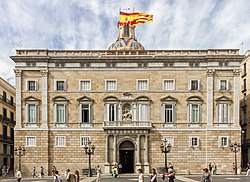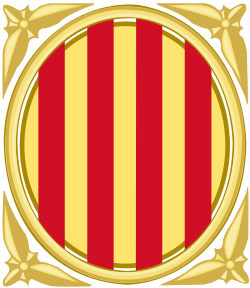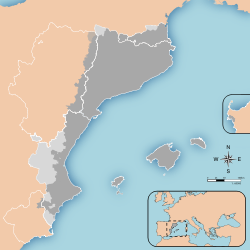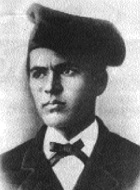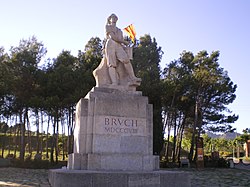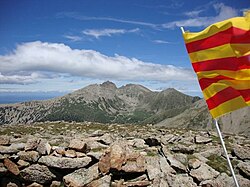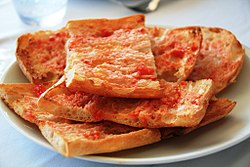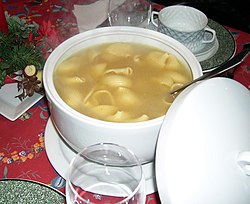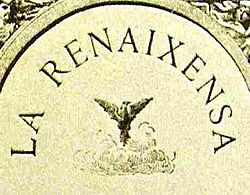| Catalan / Valencian cultural domain |
|---|
 |
The national symbols of Catalonia are objects, icons or cultural expressions that are emblematic, representative or otherwise characteristic of Catalonia or Catalan culture.
Contents
- Official national symbols
- Historical
- Cultural and popular symbols
- Historical figures
- Politics
- Literature
- Art and architecture
- Various
- Religious
- Geographic
- Gastronomy
- Flora and fauna
- See also
- References
- External links
The oldest Catalan symbol is the coat of arms of Catalonia, which was the royal arms of the Crown of Aragon, though a number of theories trace its origin to even older times. It is one of the oldest coats of arms in Europe. [1] [2] [3] [4] Owing to a common history and shared experiences, some of the traditional Catalan symbols overlap with those of Aragon, Valencia and the Balearic Islands. This is often cause of controversies regarding differing perceptions of the culture, the history and the language issues surrounding the former Crown of Aragon and the culturally Catalan lands.
Catalonia's national symbols as defined in the Statute of Autonomy of Catalonia [5] are the flag, Catalonia's day, and the anthem. These symbols have often a political and revindicative significance. Other symbols may not have official status, for different reasons, but are likewise recognised at a national or international level.




